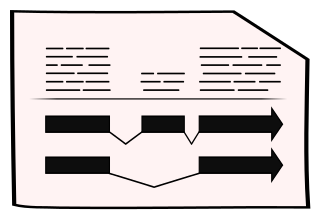Caenorhabditis briggsae
BioProject PRJNA784955 | Data Source NORTHWESTERN UNIVERSITY | Taxonomy ID 6238
About Caenorhabditis briggsae
Caenorhabditis briggsae is a small, free-living roundworm found in decaying plant material especially compost and mushroom beds in temperate regions throughout the world. The worms feed on the bacteria and other microorganisms associated with plant decay. The biology of C. briggsae is similar to that of C. elegans, with a short generation time through four larval stages into an adult. C. briggsae is hermaphroditic like C. elegans and distinct from the other sequenced worms which have both male and female adult animals. C. briggsae is often found at the same site as both C. elegans and C. remanei. C. briggsae is frequently found associated with snails that are presumed to transport worms, especially the dormant dauer stage, from one location to another.
There is 1 alternative strain from this genome project for Caenorhabditis briggsae available in WormBase ParaSite: QX1410_ONT
There is 1 alternative genome project for Caenorhabditis briggsae available in WormBase ParaSite: PRJNA10731
Genome Assembly & Annotation
Assembly
This chromosome-leve assembly was generated from the C. briggsae VX34, a highly divergent strain isolated in China.
Oxford Nanopore long-reads were assembled using Canu r10117, Flye v2.8.1-b1676 and wtdbg2 v0.0. The ONT reads were aligned to the Flye assemblies using minimap2 v2.17-r941 and error-correction was performed. Medaka v1.1.2 was used to correct sequencing errors. Remaining sequencing errors were corrected by aligning a paired-end Illumina dataset to the assemblies using bwa mem v0.7.17-r1188 (Li 2013) and providing the resulting alignments to Pilon v1.23. Read Stevens L, et al., 2022 for full details.
Annotation
Protein-coding gene predictions using BRAKER v2.1.6. Short RNA-Seq reads were aligned to the genome and the alignments were provided to the BRAKER pipeline. Long PacBio RNA-Seq reads were generated and aligned to the genome to generate high-quality transcripts (IsoSeq) which were used to perform transcriptome assembly using minimap2 and StringTie v2.1.2. AGAT was used to extract gne models from the transcriptome assembly. These models were merged with the BRAKER models. Read Stevens L, et al., 2022 for full details.
Downloads
Tools
Key Publications
- Stevens L, Moya ND, Tanny RE, Gibson SB, Tracey A, Na H, Chitrakar R, Dekker J, Walhout AJM, Baugh LR, Andersen EC. Chromosome-Level Reference Genomes for Two Strains of Caenorhabditis briggsae: An Improved Platform for Comparative Genomics. Genome Biol Evol, 2022;14(4):evac042
Navigation
Assembly Statistics
| Assembly | ASM2245388v1, GCA_022453885.1 |
| Strain | VX34 |
| Database Version | WBPS19 |
| Genome Size | 106,953,292 |
| Data Source | NORTHWESTERN UNIVERSITY |
| Annotation Version | 2022-09-WormBase |
Gene counts
| Coding genes | 19,749 |
| Gene transcripts | 29,546 |
Learn more about this widget in our help section
This widget has been derived from the assembly-stats code developed by the Lepbase project at the University of Edinburgh












